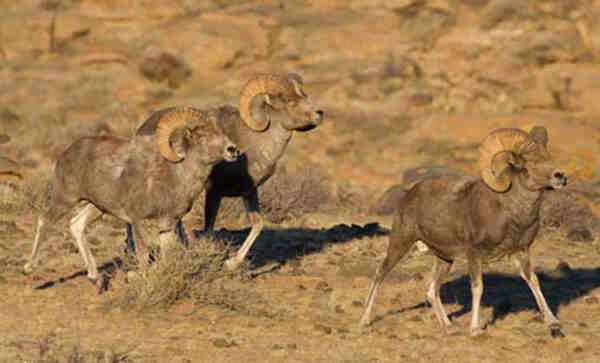Ovis darwini
IUCN
LCBasic Information
Scientific classification
- name:Ovis darwini
- Scientific Name:Ovis darwini,Mongolian argali, Argali mongolica
- Outline:Ungulata
- Family:Artiodactyla Ruminantia Bovidae Caprinae Argali
Vital signs
- length:120-200cm
- Weight:65-185kg
- lifetime:10-15years
Feature
The horns are the shortest of all the Asiatic mouflon
Distribution and Habitat
The Gobi argali is a subspecies of argali that lives in the Gobi regions of Mongolia and China.
It is distributed in southwestern and southern Mongolia, including parts of the Gobi Desert and the China-Mongolia border area.
Appearance
The Gobi argali has a sturdy body, 1.2-2 meters long, 90-120 cm shoulder height, 65-185 kg weight, and shoulder height equal to or lower than hip height. It has a large head, thick neck, and a short tail. In summer, adult males are yellow-brown on the body, fading to light yellow-brown on the sides, and light yellow on the chest. Older males have darker fur. A narrow black line extends from the occipital bone (back of the head) almost to the base of the tail. The abdomen is transparent white. The front of the legs is dark brown. In winter, it is generally dark chocolate or dark brown, and the lower body is generally light yellow-brown to light brown.
Both males and females have horns, but the shape and size are obviously different. The male horns are particularly large, twisted in a spiral shape for more than a circle, with obvious and narrow ring edges on the outside of the horns. After the ram's horns grow from the top of the head, the two horns extend slightly outward and ba
Details
The Gobi argali is named Ovis darwini, and was once a subspecies of argali.

The Gobi argali is generally considered to be a Gobi subspecies of the argali (Ovis ammon). It is considered an independent species in the book Ungulate Taxonomy co-authored by British scholar Peter Grubb and Australian scholar Colin Groves. This statement is also adopted in China's "National Key Protected Wildlife List" released in 2021. However, as of February 2021, the IUCN Red List of Threatened Species and most data will still consider it a subspecies of argali.
The Gobi argali has relatively long legs and a relatively thin body. Compared with other wild sheep, its climbing skills are relatively poor, so it generally avoids escaping to too steep slopes when escaping. When feeding or resting, there is often an adult sheep watching from a high place, which can detect abnormalities in a long distance in time, and when danger comes, it will send a signal to the group. They can run and jump on cliffs, come and go freely, and are extremely thirst-resistant. They can go without water for several days. In winter, they eat snow without water. The argali has keen vision, hearing and smell, and is alert. It will quickly escape at the slightest movement. It often moves in small groups, with a small number of people in each group. It is more common to have a few to more than ten people, and it seems that they do not move in large groups.
Gobi argali usually live in groups of 3-5 or dozens of them. They are active mainly at dawn and dusk, and often forage during the day in winter. The estrus period is in winter, so that lambs can be born in spring. They live on grass and leaves, and feed on grass, allium and weeds. Argali are good at climbing mountains and are relatively cold-resistant. The main natural enemies of argali are wolves and snow leopards. Argali have a wide diet and eat all kinds of plants in their distribution areas. There is a saying that old male argali are often unable to eat due to their huge horns and are starved to death. During mating, male argali compete fiercely for mates, and the sound of their huge horns colliding is huge. People on the hillside can hear the sound of the huge horns of male argali competing for mates on the other side of the mountain, so many collision marks can generally be seen on the horns of male argali.
Listed in the IUCN Red List of Threatened Species in 2020 ver3.1 - Near Threatened (NT).
Listed in Appendix I, II and III of the Convention on International Trade in Endangered Species of Wild Fauna and Flora (CITES) 2019 edition Appendix II.
Listed in China's National Key Protected Wildlife List (February 5, 2021) Level II.








